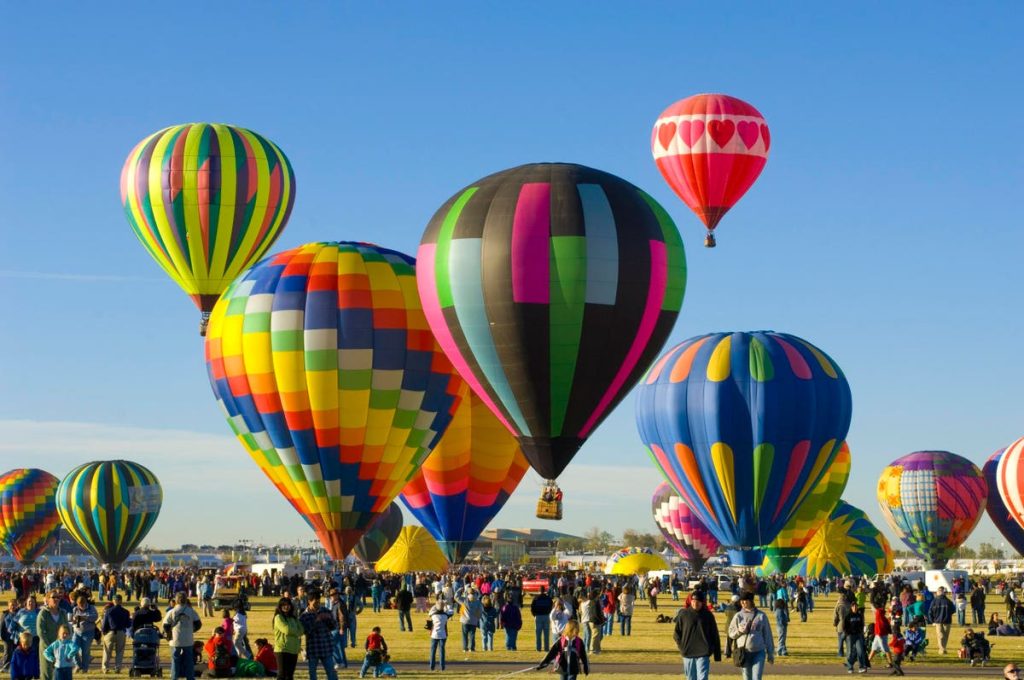There’s no doubt as to what will be “ground zero” for the upcoming “ring of fire” annular solar eclipse on Saturday, October 14, 2023.
Ask any group of eclipse-chasers where they’re headed and you’ll get the same answer from at least half of them (as well as NASA)—to Albuquerque for the hot air balloon festival.
By sheer coincidence the “ring of fire”—a rare kind of solar eclipse that hasn’t been visible from the U.S. since 2012—will be seen for 4 minutes 43 seconds from 10:34 a.m. MDT on the penultimate day of the Albuquerque International Balloon Fiesta.
The festival, which has been happening every year since 1972, sees as many as 600 hot air balloons lofted skywards. This year the action takes place from Oct. 7-15, 2023 at the Balloon Fiesta Park in the northern part of the city. Here’s a Google Map.
As well as being almost bang on the centerline of the path of the eclipse, clear blue skies are the norm in October.
Double Bucket-Lister
It’s a double bucket-lister opportunity if ever there was one and tickets are typically $15 per session to spectate—but won’t it be too busy, and hotels sold-out? After all, crowds of 100,000 are expected. “We have more than 250+ acres of space available at the park, which includes an 80-acre launch field,” said publicist Tom Garrity via email. “There’s plenty of space for people.”
There also appears to be multiple hotels with rooms, albeit beginning to increase in price. A quick check of several hotel booking websites indicates that these five hotels—all close to Balloon Fiesta Park—all had rooms for two adults for two nights, Oct. 13-15 (as of Sept. 6).
- Days Inn & Suites by Wyndham Albuquerque North: $258 per night
- Courtyard by Marriott Albuquerque: $431 per night
- Springhill Suites Albuquerque North/journal Center: $499 per night
- Nativo Lodge: $329 per night
‘Eclipse Glow’
Will the balloons cover the eclipse for viewers below? Perhaps the early partial phases. The moon will appear to take a bite out of the sun (first contact) at 9:13 a.m. on Saturday, October 14, but by the time the “ring of fire” occurs at 10:34 a.m. MDT all the balloons should be down. The moon will leave the sun at 12:09 p.m. MDT (fourth contact).
The partial solar eclipse will begin to be visible during the tail end of “mass ascension” of balloons, which will be followed by an “eclipse glow” during which balloons will glow on the launch field in the (slight) darkness caused by the “ring of fire”.
Here’s the eclipse timings for Albuquerque from TimeAndDate.com:
‘Event of A Lifetime’
“Experiencing the International Balloon Fiesta and and annular solar eclipse in Albuquerque together will be the event of a lifetime,” said Executive Director Sam Parks in a press release. “We are working closely with experts from NASA to make sure our guests can get the most out of our New Mexico skies in October.”
NASA will have a presence throughout the Balloon Fiesta, live streaming the event on NASA TV from the Albuquerque Balloon Museum while also giving away 80,000 solar eclipse viewing glasses for all guests coming in that morning. NASA experts will also be offering presentations, exhibits and more about the eclipse.
New Mexico is one of nine states in the path of this annular solar eclipse, during which the moon does not fully cover the sun, leaving a thin outer ring visible—the “ring of fire.”
I am the editor of WhenIsTheNextEclipse.com and author of The Complete Guide To The Great North American Eclipse of April 8, 2024.
Wishing you clear skies and wide eyes.
Read the full article here










